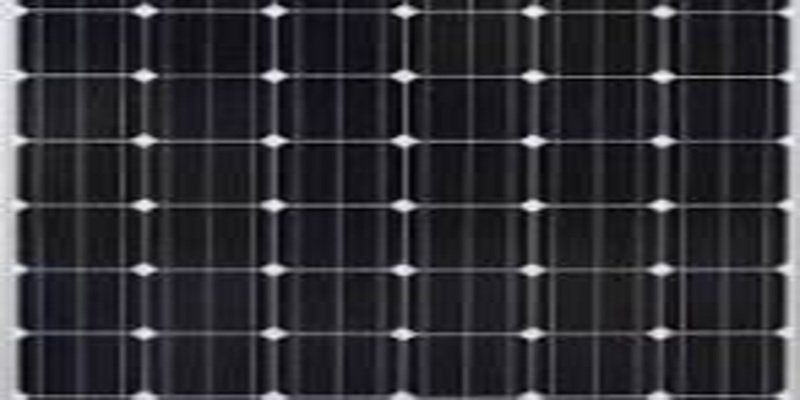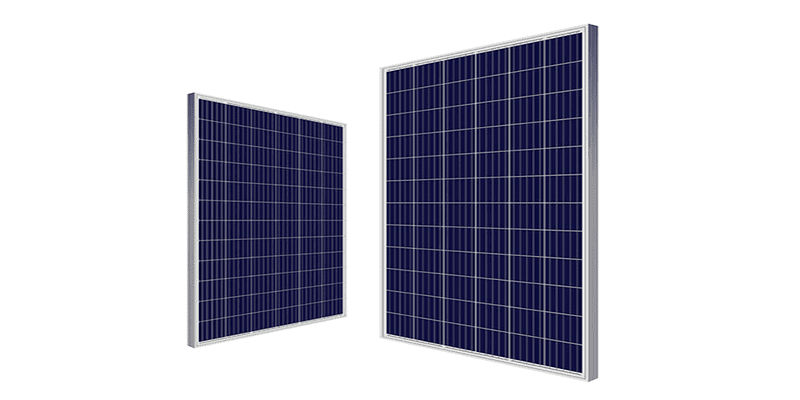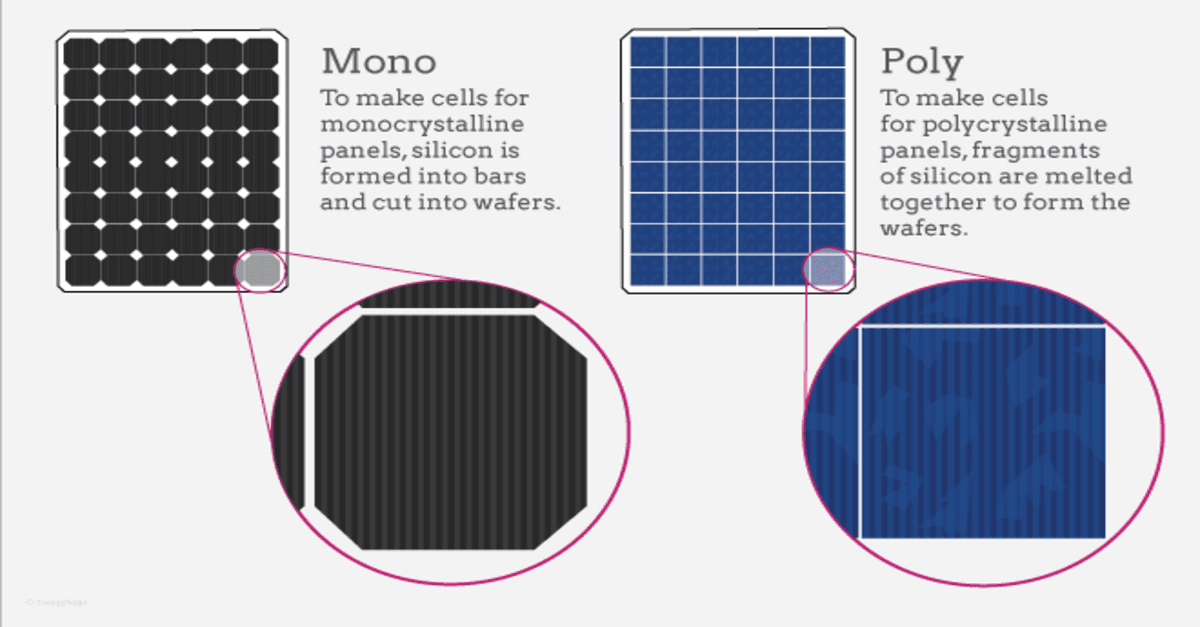Solar panels are a leading innovation in the renewable energy field that is helping to guide the globe toward a sustainable future. Monocrystalline vs. Polycrystalline solar panels, each with unique features, uses, and benefits, are the most common varieties among the many available for residential installations. To assist you with making an informed choice that is specific to your energy requirements, this article thoroughly compares these solar power workhorses.
What are Monocrystalline Solar Cells?
One continuous crystal structure is used to create monocrystalline solar cells. Their rounded edges and consistent black appearance help to identify them. These panels are renowned for their endurance, perhaps lasting between 25 and 40 years, and offer superior efficiency rates—typically over 20%—due to the purity of the silicon used in their construction.

How Do Monocrystalline Cells Work?
Sunlight is used by these cells to generate power. Because of the homogeneous structure of high-quality silicon, electrons may flow freely and are therefore more effective at turning sunlight into energy. This efficiency, which provides more power output in a smaller area, is especially beneficial for limited roof spaces..
What is Polycrystalline?
Conversely, several silicon crystals are melted together to create polycrystalline solar panels. They are distinguished visually by the blue, speckled look that comes from melting. Despite having a shorter lifespan (25–35 years) and slightly lower efficiency rates (15%–17%) than their monocrystalline counterparts, they offer homeowners a more cost-effective option.
How Does Polycrystalline Work?
The essential working concept of these panels is the same as that of monocrystalline panels; however, the existence of numerous crystals may partially impede electron mobility, hence decreasing efficiency. But thanks to substantial technological developments, this difference is no longer as great, making polycrystalline panels an appealing choice for many.

Applications of Monocrystalline
In residential contexts, monocrystalline solar panels are frequently utilized, particularly in houses with small roof spaces. They are a desirable alternative for homeowners who want to optimize their energy output while keeping their home’s look due to their high efficiency and simplified design.
-
Residential Rooftops
As previously indicated, monocrystalline solar panels are a common option for small residential rooftops. These panels are an effective and sensible choice for households because they can generate more power in less space.
-
Off-Grid Systems
Monocrystalline solar panels are also frequently utilized in off-grid systems, which give isolated residences or cabins energy independence. These panels are ideal for off-grid living, where optimizing energy output is critical, due to their great efficiency.
-
Portable Solar Panels
Portable solar panels, like those for RVs and camping, are also made of monocrystalline cells. They are an easy and useful choice for power generation on the go because of their small size and great efficiency.
Applications of Polycrystalline
Polycrystalline solar panels are useful in a variety of settings due to their vast range of applications. They might not be as effective as monocrystalline panels, but many find them to be a more affordable and flexible option.
-
Commercial Solar Farms
Large commercial solar farms with ample space and a high initial cost are common places for polycrystalline panels to be utilized. These panels are a great option for business use because they can be deployed in large quantities to generate large amounts of energy.
-
Large-Scale Residential Installations
Polycrystalline solar panels can offer a cost-effective solution for homeowners wishing to install solar panels on their roofs in residential situations where space is not an issue. They’re a popular option for larger installations because of their cheaper cost and respectable efficiency rates.
-
Agricultural Applications
Agricultural settings also use polycrystalline solar panels for irrigation systems and farm equipment power. These panels are a viable option for farmers who want to use renewable energy on their farms because of their adaptability and low cost. Both monocrystalline and polycrystalline solar panels are attractive options for many situations due to their broad range of applications. Efficiency, affordability, or beauty will all play a role in the final decision between the two, as will personal demands and preferences.
Types of Solar Panels Beyond Monocrystalline and Polycrystalline
Although the market is dominated by monocrystalline and polycrystalline solar panels, thin-film solar panels and other cutting-edge technologies such as bifacial, organic, and copper indium gallium selenide (CIGS) solar cells also offer distinctive benefits for particular applications, giving users more options depending on their requirements..
Thin-Film Solar Panels
An amorphous solar cell, or thin-film solar panel, is created by depositing a thin silicon layer onto a supporting material. Thanks to this technology, panels that are flexible and lightweight can be utilized for a variety of purposes, including curved or portable surfaces.
Bifacial Solar Panels
Bifacial solar panels are made to collect sunlight on both of their faces. Which boosts their output of power and efficiency. They can be constructed using polycrystalline or monocrystalline cells. However, to let light pass through from both sides, glass is frequently used as the backing material.
Copper Indium Gallium Selenide (CIGS) Solar Cells
A thin layer of copper, indium, gallium, and selenide is deposited on a supporting material to create CIGS solar cells. These cells can be used to create flexible or lightweight panels, and they have high-efficiency rates.
Organic Solar Cells
Carbon-based polymers and other organic materials are used in organic solar cells to convert solar radiation into electrical power. These solar cells present an affordable and environmentally responsible choice. They currently have lower efficiency rates than conventional silicon-based solar cells, still.
Compare Monocrystalline vs. Polycrystalline Solar Panels
The table farm discusses a few of the differences below.
Comparing Solar Paint and Traditional Solar Panels |
||
| Aspect | Solar Paint | Traditional Solar Panels |
| Form and Integration | Applied as paint/coating on surfaces | Structured panels mounted on rooftops or grounds |
| Aesthetics | Blends into existing structures | May alter building aesthetics |
| Flexibility | Adaptable to various shapes and sizes | Fixed sizes and shapes |
| Installation | Simple applications can retrofit existing structures | Requires specialized installation |
| Weight and Portability | Lightweight, ideal for unconventional surfaces | Relatively heavy |
| Efficiency | Lower efficiency compared to panels | Higher efficiency potential |
| Scalability | Potential for larger surface coverage | Limited by available space |
| Cost | Generally lower costs, including installation | Higher initial costs and installation expenses |
Pros and Cons
The benefits and drawbacks are covered in the section below.
Monocrystalline
Pros:
- Higher efficiency
- Longer lifespan
- Sleek appearance
Cons:
- Higher initial cost
- Produces more waste during manufacturing
Polycrystalline
Pros:
- Lower cost
- Less waste production during manufacturing
Cons:
- Slightly lower efficiency
- Shorter lifespan
Conclusion
The decision between Monocrystalline vs. Polycrystalline solar panels ultimately comes down to your unique demands. Such as your energy requirements, available space, and budget. Polycrystalline panels offer a more affordable option without noticeably sacrificing performance. However monocrystalline panels offer greater efficiency and a more consistent appearance.
